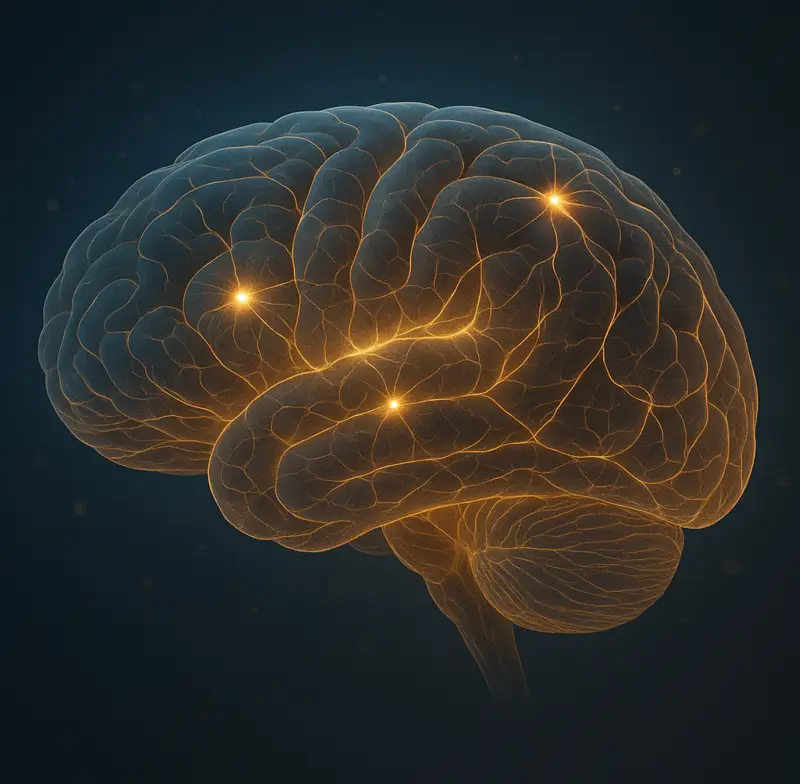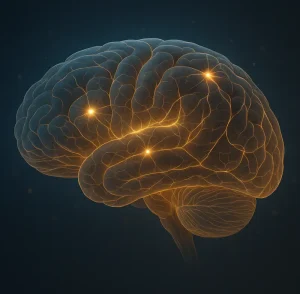Introduction: Why Habits Are the Language of the Brain
Every day, nearly half of what we do is automatic shaped by habits, not conscious decisions. From brushing our teeth to checking our phones, these repeated behaviors run on mental autopilot. The reason? Our brain is an energy optimizer. It saves effort by turning repeated actions into routines that require little thought.
This efficiency is what makes habits so powerful. They act as the brain’s shorthand for survival, allowing us to focus on creativity and problem-solving instead of daily repetition. But this same power means that harmful habits can take root just as easily as positive ones. Understanding how habits work at the neurological level is the key to lasting transformation.
Understanding Neuroplasticity: The Brain’s Adaptable Design
The human brain is not static it’s dynamic and ever-changing. This adaptability is called neuroplasticity, the brain’s ability to form and reorganize neural connections throughout life.
Every time you repeat an action or thought, neurons fire together. Over time, this repeated activity strengthens the connections between them. The brain interprets this repetition as importance, reinforcing the pathway so the behavior becomes automatic.
As scientists say: “Neurons that fire together, wire together.”
For example, when you first learn to drive or meditate, it requires focus and effort. But with repetition, the task moves from your conscious brain (the prefrontal cortex) to your subconscious habit center (the basal ganglia). That’s how habits become effortless the brain literally reprograms itself to make them automatic.

The Habit Loop: Cue, Routine, Reward
At the core of every habit lies a predictable pattern called the habit loop, popularized by researcher Charles Duhigg. It consists of three parts:
- Cue the trigger that starts the behavior.
- Routine the action you take.
- Reward the positive feeling or result that reinforces the behavior.
For instance, a phone notification (cue) makes you open your messages (routine), and you feel connected or entertained (reward). The brain releases dopamine, the chemical associated with motivation and pleasure, reinforcing the loop.
Interestingly, dopamine doesn’t just spike during the reward — it rises in anticipation of it. That’s why habits, both good and bad, are so hard to break. Your brain learns to crave the expectation of satisfaction, not just the outcome itself.
Micro Habits: The Power of Small Wins
Big changes often fail because they overwhelm the brain’s reward system. In contrast, micro habits small, consistent actions are easier to adopt and sustain.
The brain thrives on progress. Each small success creates a dopamine release, which reinforces the behavior and builds motivation. Over time, these micro habits compound into powerful transformations.
Examples include:
- Writing one sentence a day instead of forcing an entire page.
- Meditating for two minutes instead of thirty.
- Drinking a glass of water every morning before coffee.
Small habits are more sustainable because they require minimal willpower and fit seamlessly into your routine. Once established, they create momentum and momentum rewires the mind.

Dopamine and Motivation: The Brain’s Reward Currency
Dopamine is often misunderstood as a pleasure chemical, but it’s really about anticipation and motivation. It drives you to take action toward rewards, not just enjoy them.
When you set achievable goals and make progress, dopamine gives you a sense of satisfaction that fuels persistence. However, when we chase quick dopamine spikes like endless scrolling or junk food the brain becomes desensitized, leading to short attention spans and motivation crashes.
Building healthy habits is about redirecting dopamine from instant gratification to meaningful progress. In other words, rewarding effort instead of outcome. Each time you follow through on a positive habit, your brain learns that discipline feels good and that lesson becomes your new wiring.
Breaking and Rewiring Habits
Old habits don’t disappear overnight; they weaken through disuse and are replaced by stronger, more beneficial ones. The key lies in awareness and substitution.
- Identify the cue What triggers the behavior?
- Replace the routine Choose a positive action instead.
- Reward yourself Reinforce the new pattern emotionally.
For example, if stress triggers mindless snacking, replace the snack with a deep breathing break or short walk. Over time, the brain will associate the same cue with a new, healthier routine.
Mindfulness plays a critical role here. When you become conscious of your automatic behaviors, you interrupt the habit loop long enough to rewrite it.
The Role of Emotion and Memory in Habit Formation
Emotion is the glue that holds habits together. The stronger the emotional response tied to a behavior, the more likely it is to stick. This is why emotionally charged experiences — both good and bad are so memorable and habit-forming.
Positive emotions like pride, gratitude, or calmness reinforce new habits by linking them with pleasure. For instance, celebrating small milestones or tracking your progress increases your brain’s desire to repeat the behavior.
Conversely, guilt or shame can sabotage habit change by triggering stress, which reactivates old coping behaviors. The best approach is positive reinforcement nurturing habits through encouragement, not punishment.
The Sustainable Mindset: Consistency Over Intensity
The biggest misconception about habits is that change requires intensity. In truth, it requires consistency.
Every repeated action, no matter how small, signals your brain about who you are becoming.
This is the essence of identity-based habits focusing on being rather than just doing.
Instead of saying “I want to exercise,” say “I am someone who moves daily.”
Instead of “I want to be calm,” say “I am a calm person practicing awareness.”
These identity shifts align your behavior with your self-image, making habits natural rather than forced.
Consistency builds confidence, and confidence strengthens identity. Together, they create a self-sustaining cycle of growth.
Conclusion: Your Brain Learns What You Repeat
Habits are the brain’s way of turning effort into ease. Each small, repeated action strengthens neural connections and reshapes identity.
Through neuroplasticity, every thought, every routine, and every act of self-discipline rewires your mind toward clarity, balance, and purpose.
Your brain doesn’t distinguish between good or bad only between repeated and rare.
So the question becomes: What do you want your brain to practice becoming today?







